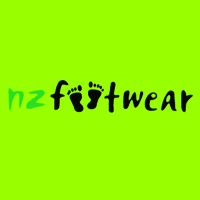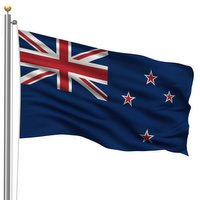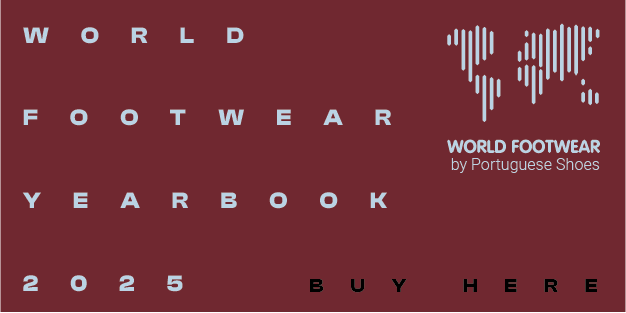Duncan Ingram, from the New Zealand Footwear Industry Association, live on World Footwear

Aiming to get an updated view of the state of the footwear industry in New Zealand, we spoke to the sector's association
World Footwear spoke with Duncan Ingram, Secretary of the New Zealand Footwear Industry Association, to evaluate the state of the footwear industry in the country.
New Zealand footwear market and International trade
The New Zealand footwear market is quite mature and characterized by stability. According to Mr. Ingram: “In general little has changed in the pattern of imports and exports over the last 3 or 4 years. There will always be some degree of fluctuation due to the influence of consumption on the quantity”, but apart from that the market has been quite stable.
Imports, on one side, have remained remarkably stable for the last few years, from 22.5 million pairs in 2011 to 23.8 million pairs in 2014. Values in New Zealand dollars have been quite stable as well, from 300.4 million New Zealand dollars to 326.8 million New Zealand dollars in 2014.
Exports declined in the last few years, as there are fewer firms exporting. From 0.3 million pairs exported in 2012, the country’ sales abroad decline to less than half in 2014 (0.1 million pairs), with a reflection in the value of exports for the period (from 8.4 million New Zealand dollars in 2012 to 2.7 million New Zealand dollars in 2014). Re-exports also declined in the period, although at slower rhythm (from 1.1 million pairs in 2012 to 0.9 million pairs in 2014, valued at 34.1 million New Zealand dollars in 2012 to 29.9 million New Zealand dollars in 2014).
Some variations occurred in terms of average prices when compared to other countries, which reveals the impact of the currency variations: “The US dollar has declined in value against the New Zealand dollar over a period, but this has recently tended to reverse again with the US dollar strengthening. The Euro on the other hand has recently weakened against our currency. The New Zealand dollar is currently very close to being in parity with the Australian dollar thus influencing trade under the Australian / NZ CER agreement”. This obviously impacts official international statistics, but when looking at the number in New Zealand dollars, little has changed in the last few years.
Free Trade Agreement with China
The Free Trade Agreement between New Zealand and China, in place since 2008 resulted in lower tariffs on Chinese imports, which are expected to reduce to zero by 2016. For the New Zealand Association, this shouldn’t cause any further hassles to the industry as the major impact already happened: “The impending impact of the reduction in tariff on imports from China in 2016, if this does go ahead, would in my view have little effect. The extra cost imposed by the tariff on landed cost is very small, and plays an insignificant role on purchasing decisions. The cost of product out of China has increased over the last two years as a result of what is taking place in China in the way of labour cost. So I think you can take it that the footwear sector here is well prepared for 2016.”
Future challenges
In terms of challenges and priorities for the sector during the next few years Mr. Ingram is clear: “The Footwear Association has identified security of the supply chain as being an area where importers and wholesalers need to take measures to protect themselves against potential problems, as well over 90% of the footwear sold in New Zealand is made in other countries. Independent retailers (those not in the Warehouse type operation or part of a retail chain group) have been looking at increasing their sourcing out of Spain and Portugal in Europe, and Brazil in South America, to some degree”.
Note: New Zealand posts annual results for a period of 12 months ended each June
The New Zealand footwear market is quite mature and characterized by stability. According to Mr. Ingram: “In general little has changed in the pattern of imports and exports over the last 3 or 4 years. There will always be some degree of fluctuation due to the influence of consumption on the quantity”, but apart from that the market has been quite stable.
Imports, on one side, have remained remarkably stable for the last few years, from 22.5 million pairs in 2011 to 23.8 million pairs in 2014. Values in New Zealand dollars have been quite stable as well, from 300.4 million New Zealand dollars to 326.8 million New Zealand dollars in 2014.
Exports declined in the last few years, as there are fewer firms exporting. From 0.3 million pairs exported in 2012, the country’ sales abroad decline to less than half in 2014 (0.1 million pairs), with a reflection in the value of exports for the period (from 8.4 million New Zealand dollars in 2012 to 2.7 million New Zealand dollars in 2014). Re-exports also declined in the period, although at slower rhythm (from 1.1 million pairs in 2012 to 0.9 million pairs in 2014, valued at 34.1 million New Zealand dollars in 2012 to 29.9 million New Zealand dollars in 2014).
Some variations occurred in terms of average prices when compared to other countries, which reveals the impact of the currency variations: “The US dollar has declined in value against the New Zealand dollar over a period, but this has recently tended to reverse again with the US dollar strengthening. The Euro on the other hand has recently weakened against our currency. The New Zealand dollar is currently very close to being in parity with the Australian dollar thus influencing trade under the Australian / NZ CER agreement”. This obviously impacts official international statistics, but when looking at the number in New Zealand dollars, little has changed in the last few years.
Free Trade Agreement with China
The Free Trade Agreement between New Zealand and China, in place since 2008 resulted in lower tariffs on Chinese imports, which are expected to reduce to zero by 2016. For the New Zealand Association, this shouldn’t cause any further hassles to the industry as the major impact already happened: “The impending impact of the reduction in tariff on imports from China in 2016, if this does go ahead, would in my view have little effect. The extra cost imposed by the tariff on landed cost is very small, and plays an insignificant role on purchasing decisions. The cost of product out of China has increased over the last two years as a result of what is taking place in China in the way of labour cost. So I think you can take it that the footwear sector here is well prepared for 2016.”
Future challenges
In terms of challenges and priorities for the sector during the next few years Mr. Ingram is clear: “The Footwear Association has identified security of the supply chain as being an area where importers and wholesalers need to take measures to protect themselves against potential problems, as well over 90% of the footwear sold in New Zealand is made in other countries. Independent retailers (those not in the Warehouse type operation or part of a retail chain group) have been looking at increasing their sourcing out of Spain and Portugal in Europe, and Brazil in South America, to some degree”.
Note: New Zealand posts annual results for a period of 12 months ended each June












